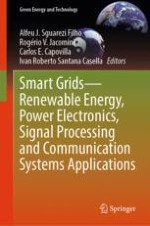This book discusses power electronics, signal processing and communication systems applications in smart grids (SG). Smart grids can be considered an evolution of the classic energy model to allow a more efficient management of the relationship between supply and demand, in order to overcome the contingency problems of the modern world. To achieve their goals, they use advanced technologies of information and communication, power electronics and signal processing, and can be used to integrate renewable energy sources.
The book is divided into two main parts. The first part presents the application of power electronics technologies in renewable energy systems, while the second part presents some telecommunications, signal processing and energy capture technologies within the context of SGs. The chapters are written by invited expert authors, according to their research areas.
